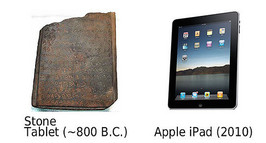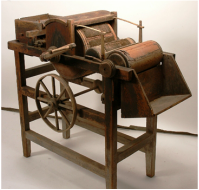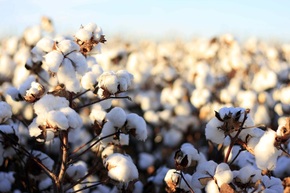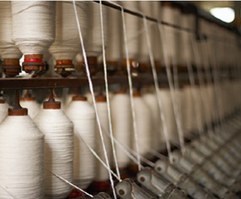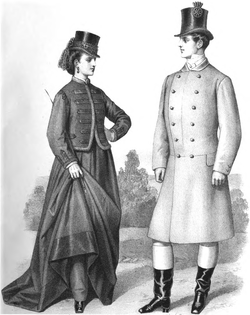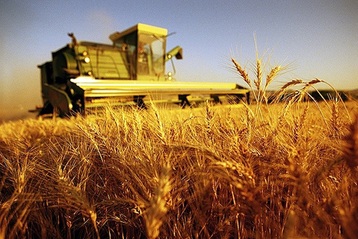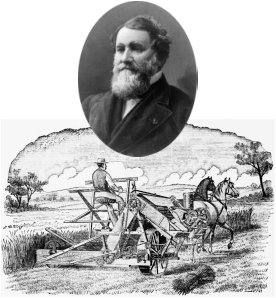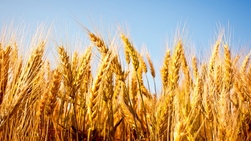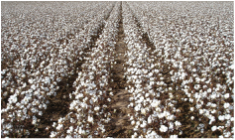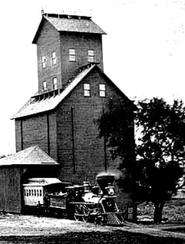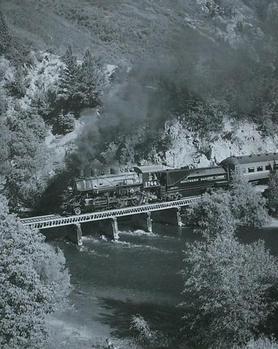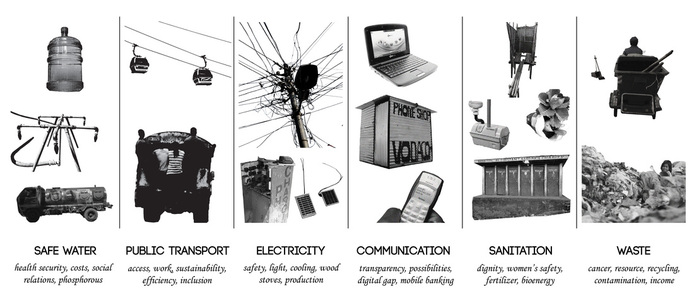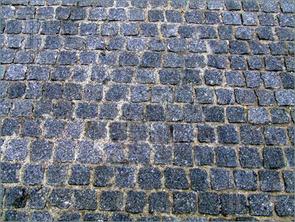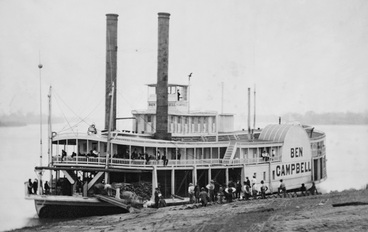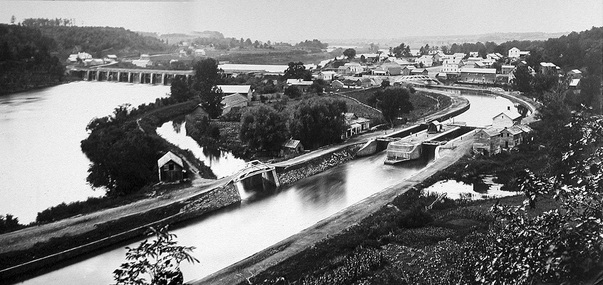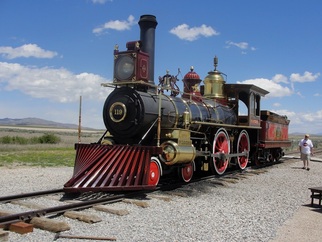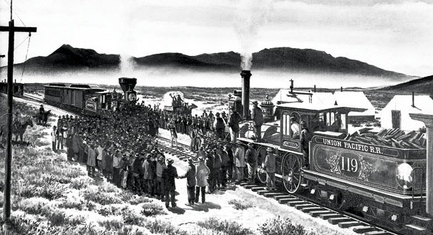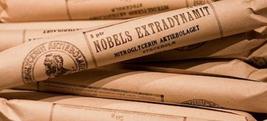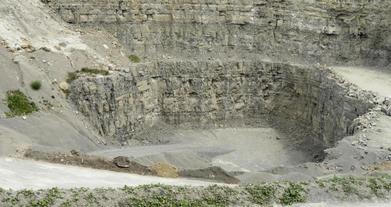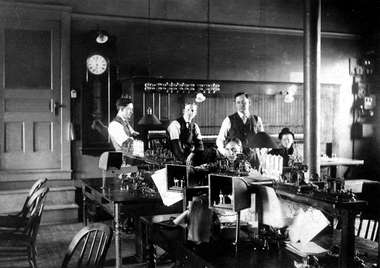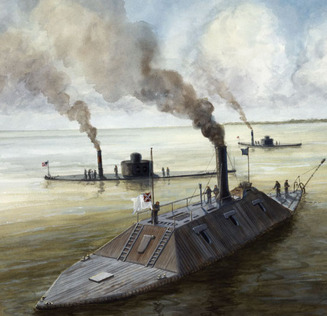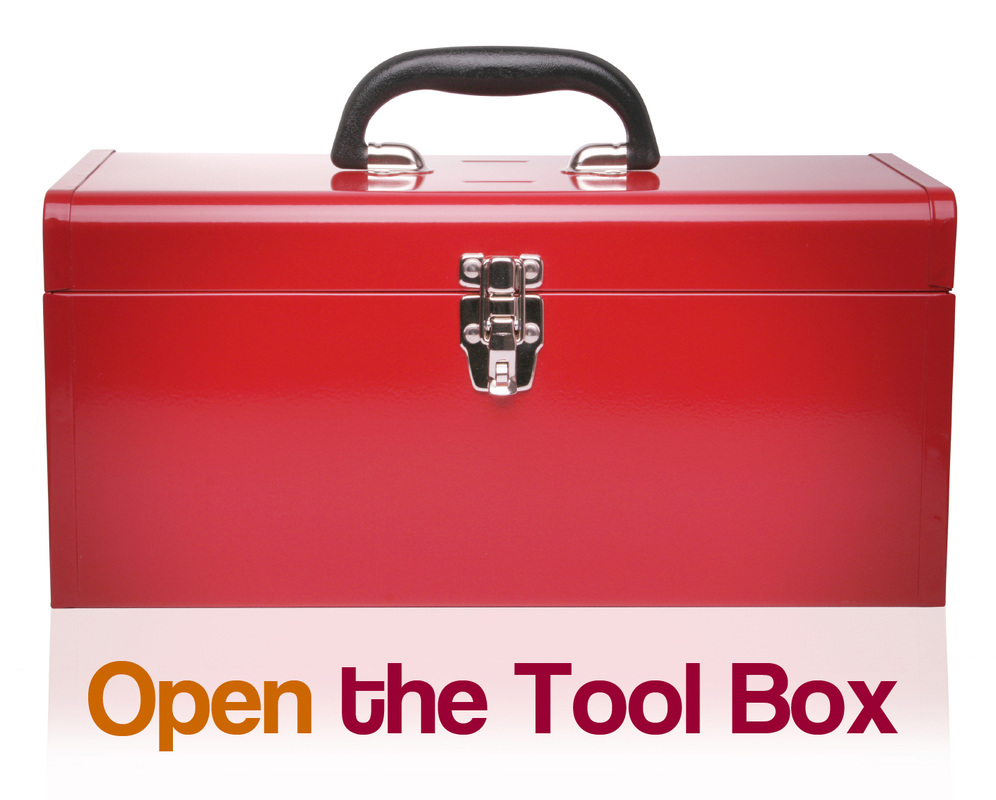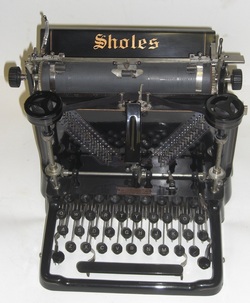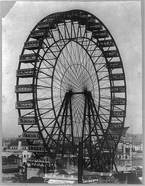Unit 3: The Industrialization Age
Topic 1: Industrialization
Topic 1: Industrialization
LESSON 5
~ REASON 3 FOR INDUSTRIAL GROWTH ~
INVENTIONS & INNOVATIONS
FOCUS ACTIVITY
Lesson Mission

DIRECTIONS: Remember, the Lesson Mission is what you, the student, will be able to do after the lesson is over. Begin today's Lesson Chronicles Entry by heading your paper with your name and the date and the Lesson Title. Write down today's essential question. Answering the essential question at the end of the lesson is your Lesson Mission!
Essential Question(s):
What inventions and innovations were the most important in American Industrialization? Why were they so important?
What inventions and innovations were the most important in American Industrialization? Why were they so important?
Set up your Lesson Chronicles for today. Remember, you are on your own now! You've got this!
TEACHER ACTIVITY
Pre - Reading - Making a Skeleton Outline
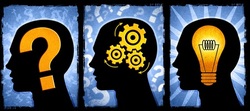
DIRECTIONS: Remember, accomplishing your lesson mission is your purpose for reading. To accomplish your mission, you must be able to answer the essential question(s). We will continue to work on answering essential questions by identifying information from key text structures using our new note-taking method called an outline.
Recall the Key Text Structures in Non-Fiction Text:
1. Headers
2. Sub-headers
3. Bolded Words
4. Italicized Words
5. Pictures & Captions
6. Boxed off Information
7. Charts and Graphs
8. Maps
Outlining Non-Fiction Text Note-Taking Method
You are now going to try outlining own your own. You have had practice but here is a checklist to make sure you do not forget anything in your Chronicles:
Lesson Mission Page:
Notes Pages:
Lesson Assessment:
1. Headers
2. Sub-headers
3. Bolded Words
4. Italicized Words
5. Pictures & Captions
6. Boxed off Information
7. Charts and Graphs
8. Maps
Outlining Non-Fiction Text Note-Taking Method
You are now going to try outlining own your own. You have had practice but here is a checklist to make sure you do not forget anything in your Chronicles:
Lesson Mission Page:
- Write your name.
- Write the date.
- Write the title of the lesson.
- Write the lesson mission question.
- Turn the page. Remember you need to save the rest of the page to answer the Lesson Mission Question at the end of the Lesson.
Notes Pages:
- Write down the header of the section.
- Read the section.
- Write down the main idea of the section.
- Write down the words and definitions of the section.
- Write down a text reference for the section. Tell me what you thought about while you read.
- Repeat steps 1 - 5 for every section.
Lesson Assessment:
- Remember to answer the Lesson Mission Question on the first page (Lesson Mission Page).
- Make sure your notes pages are in order.
- Make sure your lessons in your folder are in order. - Topic 1; Lesson 1; Lesson 2; Lesson 3; Lesson 4; Lesson 5
WHOLE GROUP ACTIVITY
Guided Reading

DIRECTIONS: Now that you have a purpose for reading, and you have identified the key elements of the reading, we will take turns reading the passage below as a class.
As you read, if a certain part of the reading makes you think of a text to text, text to self, or text to world connection, write it either in the side margin next to the notes in which you made the connection or at the bottom of your outline. Remember, text connections can also be questions you have about the reading.
Recall the text to text, text to self, and text to world strategy:
As you read, if a certain part of the reading makes you think of a text to text, text to self, or text to world connection, write it either in the side margin next to the notes in which you made the connection or at the bottom of your outline. Remember, text connections can also be questions you have about the reading.
Recall the text to text, text to self, and text to world strategy:
- Text to text references: When a certain word, phrase, or sentence reminds you of something else that you have read.
- Text to self references: When a certain word, phrase, or sentence reminds you of something about your own life.
- Text to world references: When a certain word, phrase, or sentence reminds you of a world issue or event.
~ BIGGER, BETTER, FASTER, STRONGER ~
Warships
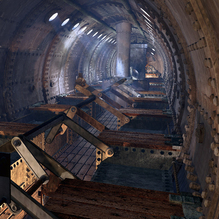 MS13 USS Alligator - a Union Civil War Submarine
MS13 USS Alligator - a Union Civil War Submarine
First of all, ironclads inspired inventors and innovators to create new types of warships for special purposes. Underwater boats were a major development in naval warfare. One underwater warship was a submarine. Submarines are boats that can be submerged and navigated under water. Torpedo boats were another warship created during this time. Torpedo boats can partly submerged underwater and are used to shoot torpedoes at the enemy. A torpedo is a bomb that is shaped like a tube and is fired underwater.
Explosives, Guns, and Rockets
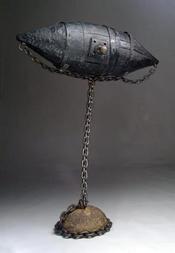 Civil War Mine Torpedo
Civil War Mine Torpedo
Torpedoes were not the only underwater weapons created. Explosive devices and mines developed as well. Explosive devices are any substance, bomb, weapon, grenade, or mine that is used to cause an explosion. Mines were the most used explosive device. A mine is a bomb that is placed in the ground or in water and that explodes when it is touched. New weapons developed during the Civil War as well. The Minie Ball, repeating rifles, hand grenades, machine guns, rockets and rocket launchers were all invented during this time.
Other Wartime Inventions
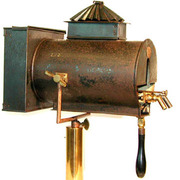 A limelight made in the Civil War
A limelight made in the Civil War
Not all wartime inventions and innovations were designed for fighting. Limelights were an invention that became useful in industry. Limelights were chemical lamps used to provide light for the user, but temporarily blind the enemy. Limelights became a very important tool for coal miners during industrialization.
THE SECOND INDUSTRIAL REVOLUTION
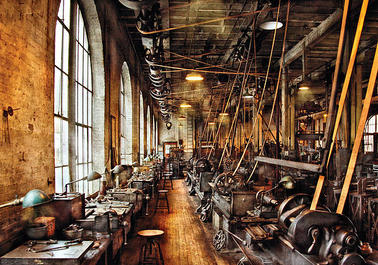 This Painting is by Mike Savad it is called - Machinist - A Fully Functioning Machine Shop
This Painting is by Mike Savad it is called - Machinist - A Fully Functioning Machine Shop
The Second Industrial Revolution began at the end of the First Industrial Revolution in the late 1800s and ended around the 1940s. The Second Industrial Revolution is also called the Technological Revolution because the inventions and innovations from this time focused on developing technology that could more effectively and efficiently manufacture and transport goods. The most important inventions and innovations of the Second Industrial Revolution involved innovations in production, electrical products, and transportation advancements.
Mass Production
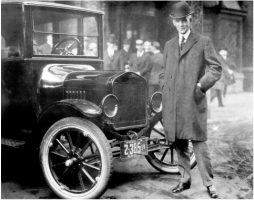 Henry Ford and his Model T
Henry Ford and his Model T
Henry Ford innovated the way things were produced when he combined several ideas into one method of production and produced the first manufactured cars. The method he created was called mass production. Mass production is producing a large number of similar goods using assembly lines, interchangeable parts, and division of labor.
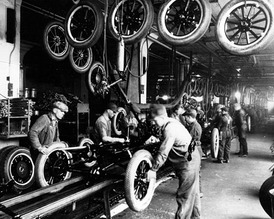 Wheels were an interchangeable part used in manufacturing the Model T
Wheels were an interchangeable part used in manufacturing the Model T
Mass production began with interchangeable parts. If you will recall, interchangeable parts are parts of a machine or product capable of being used in place of each other. So, Ford broke down the automobile into parts. Each part was manufactured exactly the same way. Next, Ford used division of labor. Division of labor is when workers are all divided into groups who put together one part of a product over and over. Division of labor is used as part of an assembly line.
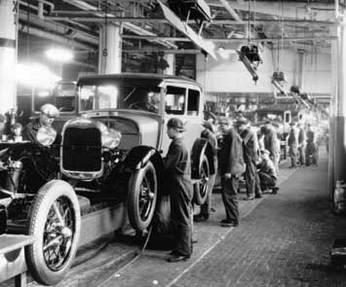 The Ford Factory Assembly Line in 1913
The Ford Factory Assembly Line in 1913
An assembly line is a technique used in mass production where groups of workers perform one small task in assembling a product then pass the product to the next group to perform a different task until the product is completely assembled. Ford made all the parts needed to construct the Model - T into interchangeable parts. He divided up all the parts and put the machines and workers needed to assemble these parts in a line. The first group would put together the first part of the car and pass it down a conveyer belt to the next group. This group would add their parts to the car and pass it to the next group. This would continue until the whole car was completed. The groups of workers became very fast at their jobs because they did that one job over and over all day long.
The Bessemer Process
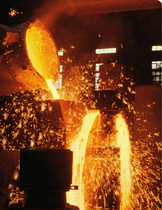 Converting iron to steel using the Bessemer Process
Converting iron to steel using the Bessemer Process
During the Second Industrial Revolution, Henry Bessemer invented a process to create steel from iron which produced steel cheaply and efficiently. The Bessemer Process was an extremely important invention because it helped made stronger rails for railroads and helped to make stronger metal machines and structures like skyscrapers. The impact of the Bessemer process led to the inventions and innovations of the Second Industrial Revolution in the late 1800's.
Inventions that Built Cities
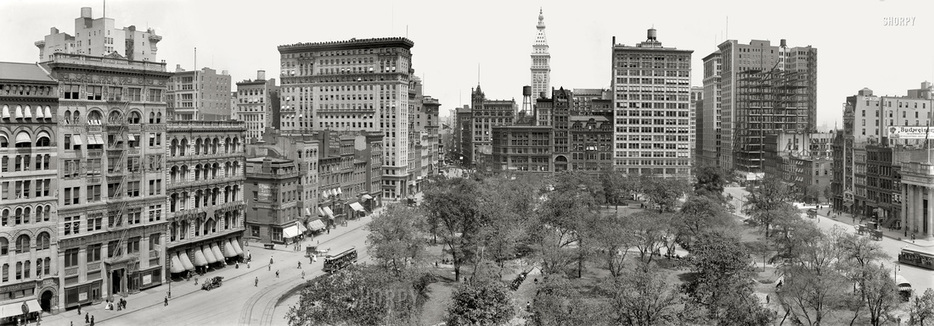 Union Square New York 1910
Union Square New York 1910
As cities grew larger with immigrants and migrants pouring in to find industry jobs, cities began to run out of room. Buildings had to be made differently in order to make room and cities would had to come up with ways of solving problems that the growing population had caused.
Skyscrapers
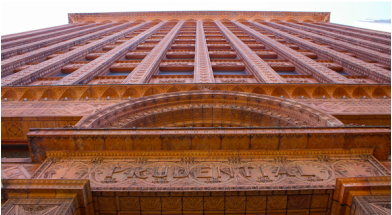 Looking up at the Guaranty Building in Buffalo New York. This was one of the first skyscrapers designed by Louis Sullivan
Looking up at the Guaranty Building in Buffalo New York. This was one of the first skyscrapers designed by Louis Sullivan
When cities began to run out of room, buildings had to be built upwards to save space. This was the beginning of skyscrapers. The Home Insurance Building was the First Skyscraper built in 1884 and was designed by architect William Le Baron Jenney who utilized a steel frame for its construction. In 1889, George Fuller built the second skyscraper, the Tacoma Building in New York, during 1889 using Bessemer steel beams. Though these skyscrapers were the first of their kind, skyscrapers were not used very often. Eventually Louis Sullivan promoted the use of skyscrapers as a way to save space in cities and emphasized the need to make them beautiful. When he did this, he invented a new form of American Architecture.
Elevators and Escalators
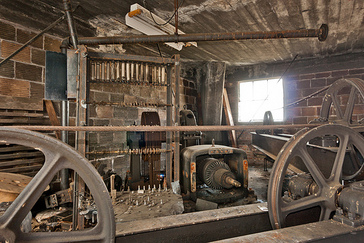 Old Otis elevator equipment
Old Otis elevator equipment
The skyscraper was originally very unpopular because people did not like climbing flights and flights of stairs. In 1853, American inventor Elisha Otis solved this problem. He established a company for manufacturing elevators and patented a steam elevator in 1861. It was his elevator brakes however, that made people come to like skyscrapers. The brakes made it possible to stop on each floor. After this, skyscrapers began to go up in big cities all over the U.S.
The escalator was invented in 1891 by Jesse W. Reno to help solve the stair problem in smaller buildings.
The escalator was invented in 1891 by Jesse W. Reno to help solve the stair problem in smaller buildings.
The Electric Lighting System
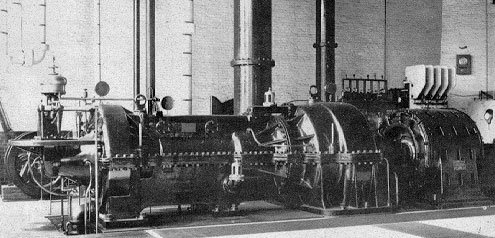 Edison's Pearl Street Power Station
Edison's Pearl Street Power Station
In 1879, Thomas Alva Edison created the first practical light bulb that could be manufactured for everyday use but it was Edison's electrical lighting system that truly changed American cities. He modeled it after the gas lighting systems used in large cities. Edison created central stations, underground conductors, meters, and lamp fixtures. He also design an electrical generator, the network it powered, electric motors, screw sockets to hold his lamps in the fixtures, and fuses to prevent electrical overloads and fires. The electrical lighting system inspired other Edison and other inventors to create new things powered by electricity.
Transportation Advancements
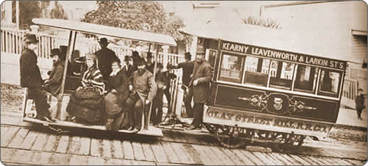 Halladie's Clay Street Car
Halladie's Clay Street Car
The world’s first four-wheeled motor vehicle was invented in 1886, but it was not a practical invention that most people could use until Henry Ford invented the Model T in October of 1908. The Model T revolutionized transportation, allowing many more Americans to buy cars.
Andrew Hallidie created the first street car system and introduced one of the first forms of public transportation to Americans. It was not long before elevated railways and subways developed adding even more modes of public transportation in large cities.
Andrew Hallidie created the first street car system and introduced one of the first forms of public transportation to Americans. It was not long before elevated railways and subways developed adding even more modes of public transportation in large cities.
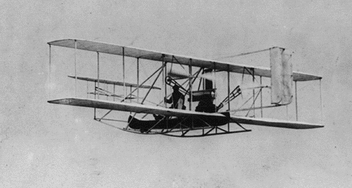 Wilbur Wright in flight from Governor's Island, September 29, 1909.
Wilbur Wright in flight from Governor's Island, September 29, 1909.
Transportation advancements were not limited to the ground. In 1900, the Zeppelin Airship was invented by Count Ferdinand von Zeppelin. A zeppelin airship was a large aircraft without wings that floats in the air because it is filled with gas. It that has a rigid frame inside its body to help it keep its shape.
In December 1903, Orville and Wilbur Wright invented the first gas motored plane and changed transportation throughout the world, forever.
In December 1903, Orville and Wilbur Wright invented the first gas motored plane and changed transportation throughout the world, forever.
Advancements for the Work Place
|
New inventions were made to improve the work place too. In 1867 Christopher Scholes invented the first practical and modern typewriter. The typewriter helped clerical work get done faster and it was the first invention in a series of inventions and innovations that lead to the creation of the modern computer. Pictured on the left: An original Scholes typewriter
|
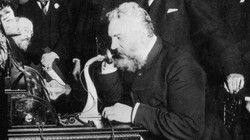 The first phone call in history!
The first phone call in history!
Another important invention that helped businesses conduct business more effectively and efficiently was invented in 1876 by Alexander Graham Bell. Bell patented the telephone and revolutionized communication all over the world.
The First Telephone Call was made on March 10, 1876. The first words ever spoken on the telephone were spoken by Alexander Graham Bell to his assistant, Thomas Watson. He said, "Mr. Watson--come here--I want to see you."
Advancements for Fun
 Eastman's paper strip film
Eastman's paper strip film
In 1884 George Eastman patented paper-strip photographic film. He established the Eastman Kodak Company in 1892 and produced film and cameras for taking pictures.
In 1877 Thomas Alva Edison invented the cylinder phonograph which could record and produce sound.
The portable motion-picture camera called the cinematograph came out in 1895. It led to the creation of motion pictures and the movie industry.
In 1877 Thomas Alva Edison invented the cylinder phonograph which could record and produce sound.
The portable motion-picture camera called the cinematograph came out in 1895. It led to the creation of motion pictures and the movie industry.
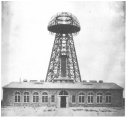 Tesla's laboratory
Tesla's laboratory
In 1897, Nikola Tesla invented the induction coil, a device needed to send and receive radio waves. His invention led to the invention of the modern radio. Radio would be the major form
of entertainment in homes all over America until the invention of the television in 1927.
|
Amusement parks were another form of entertainment that developed during this time. The Ferris Wheel was considered an engineering marvel. It was designed by George Ferris for the 1893 Chicago World's Fair. In 1898 Edwin Prescott created the first roller coaster.
Pictured to the right: The original Chicago Ferris Wheel, built for the 1893 World's
|
THE THIRD INDUSTRIAL REVOLUTION
The Third Industrial Revolution began at the end of the Second Industrial Revolution in the early 1950s and is still going on today. The Third Industrial Revolution was born when we developed the digital, computer, internet, and robotics technologies. You will learn more about the Third Industrial Revolution after the World War II Unit.
SMALL GROUP ACTIVITY
Ranking Importance!

In this activity, your group will talk about the innovations and inventions above. What do you think were the most important inventions and why? As a group rank the top 5 inventions in the reading with 1 being the most important and 5 being the least important. Be ready to explain why you ranked them the way you did.
INDIVIDUAL ACTIVITY
Answering the Essential Question
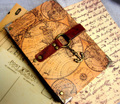
A Lesson Chronicles Activity is an individual activity where you prove that you accomplished the lesson mission. Lesson Chronicles require you to keep a notebook or journal with a table of contents. Each entry should be dated. First, you write the lesson mission. Then you prove you "can do" whatever the mission says by answering the essential question of the lesson in PQA format. Remember PQA format means "Put the Question in the Answer".
DIRECTIONS: Work by yourself to prove you have completed today's mission successfully by answering the essential question for today. Answer the question on the first page of your Lesson Chronicles under your Lesson Mission.
HOMEWORK
Finish the Lesson and Family Time

Remember, you have homework every night in Social Studies. Your homework is to show your Lesson Chronicles to your family and tell them what you learned today. Not only will this give you quality time with your family but it will help you review for your unit test. Go over your lesson chronicles entry from today everyday to help you study for the Topic Quiz and Unit Test.
If you did not complete any assignments from today, they are homework. You never know when I am going to check portfolios, so make sure you are keeping up!
If you did not complete any assignments from today, they are homework. You never know when I am going to check portfolios, so make sure you are keeping up!
END OF THE UNIT 3 LESSON 5 MODULE

Congratulations! You have Completed the Unit 3 Lesson 5 Module!
